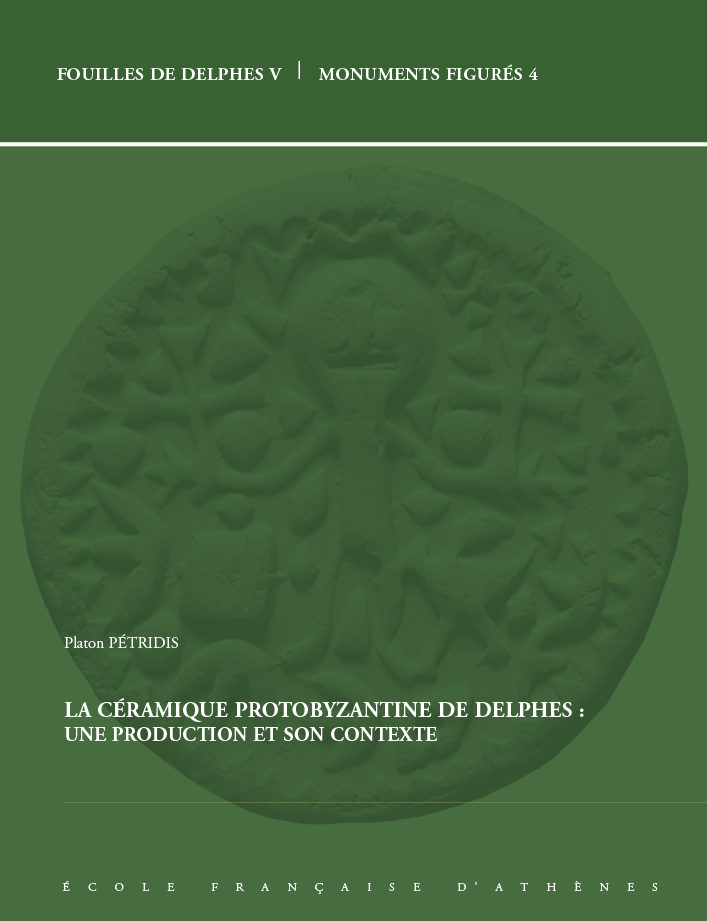On a longtemps considéré que l'interdiction de la consultation
oraculaire marquait la fin de la cité de Delphes, sans se soucier outre
mesure de la période qui suivit jusqu'à l'abandon définitif du site vers
la troisième décennie du VIIe siècle. Toutefois, les vestiges
architecturaux datant de cette époque, ainsi que le mobilier
archéologique mis au jour, contredisent cette opinion largement répandue
et prouvent l'existence d’une ville qui, sans être de l'importance d'une
métropole, s'est étendue autour, mais aussi à l'intérieur de l'ancien
sanctuaire. Cette ville a importé et surtout produit une céramique de
bonne qualité. Les installations découvertes pendant des fouilles
systématiques de l'École française d'Athènes, pour partie en
collaboration avec la Xe éphorie des antiquités préhistoriques et
classiques, montrent une industrie de taille moyenne, produisant une
gamme très étendue de céramiques d'usage domestique ou artisanal. Malgré
les difficultés politiques et économiques attestées ou simplement
supposées pour la période qui va de la seconde moitié du VIe au début du
VIIe s. en Grèce, cet artisanat resta ouvert sur les tendances de
l'époque et maintint un rapport continuel avec les autres industries
locales de la Grèce Centrale et du péloponnèse.
It
has long been considered that the closing of the oracle marks the end of
the town of Delphi, without due regard for the subsequent period which
extends to the definitive abandon of the site towards the third decade
of the seventh century. Nonetheless, architectural remains from this
period, as well as the artefacts that have come to light, contradict
this widespread opinion and prove the existence of a town, which, while
not as important as a metropolis, spread out around, but also into the
ancient sanctuary area. This town imported and, in particular, produced
good quality pottery. The installations uncovered during the systematic
excavations by the École française d'Athènes, in part a collaboration
with the Xth Ephorate of Prehistorical and Classical Archaeology,
document a medium-sized industry, producing a very extensive range of
pottery for domestic or artisanal use. In spite of the political and
economic difficulties, either attested or simply supposed for the period
from the second half of the sixth to the beginning of the seventh
century in Greece, this craft remained open to the tendencies of the
time and maintained a continuous contact with the other local industries
of Central Greece and the Peloponnese.

books & series
e-books
journals
eCSCO

 English
English
 add to cart
add to cart
